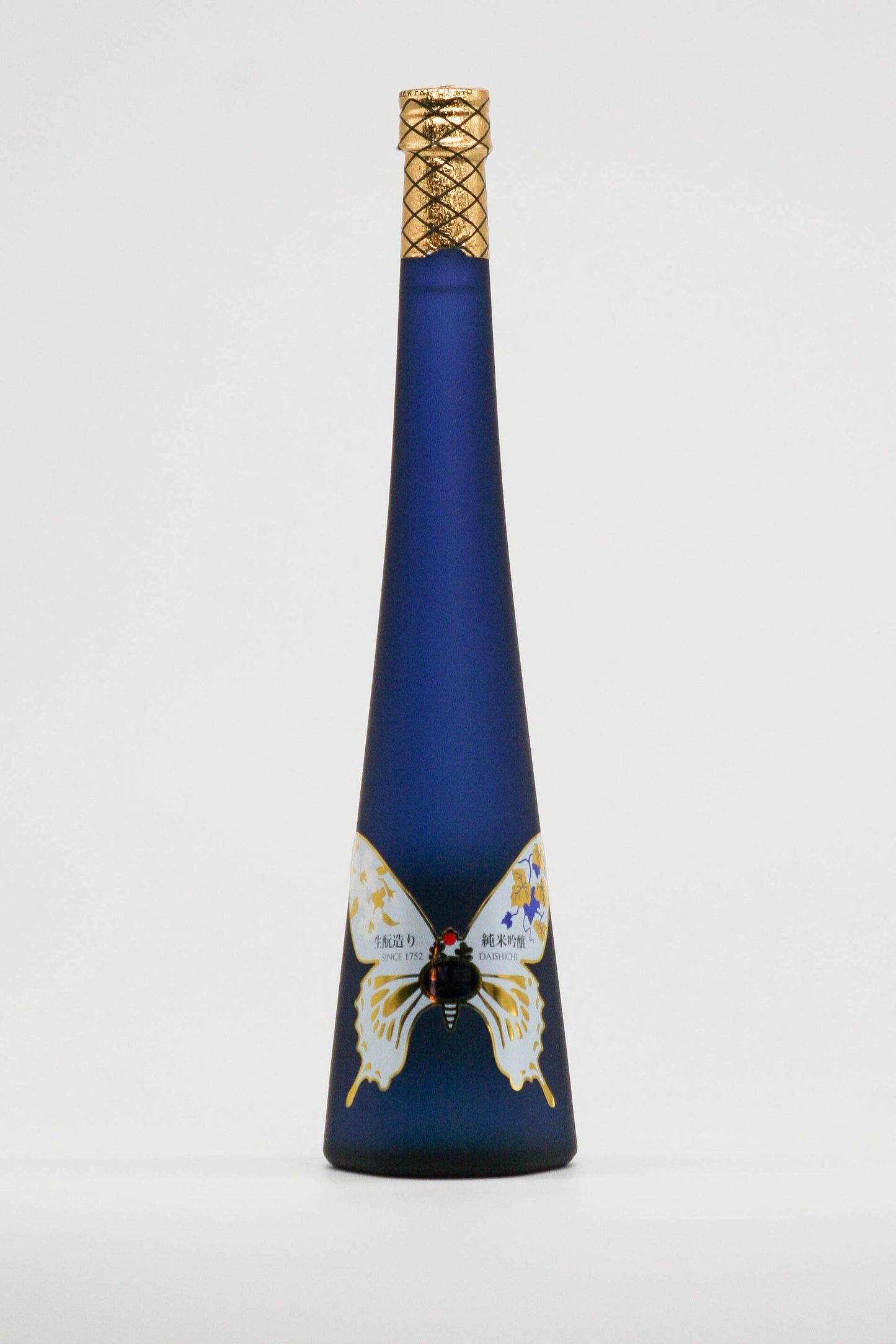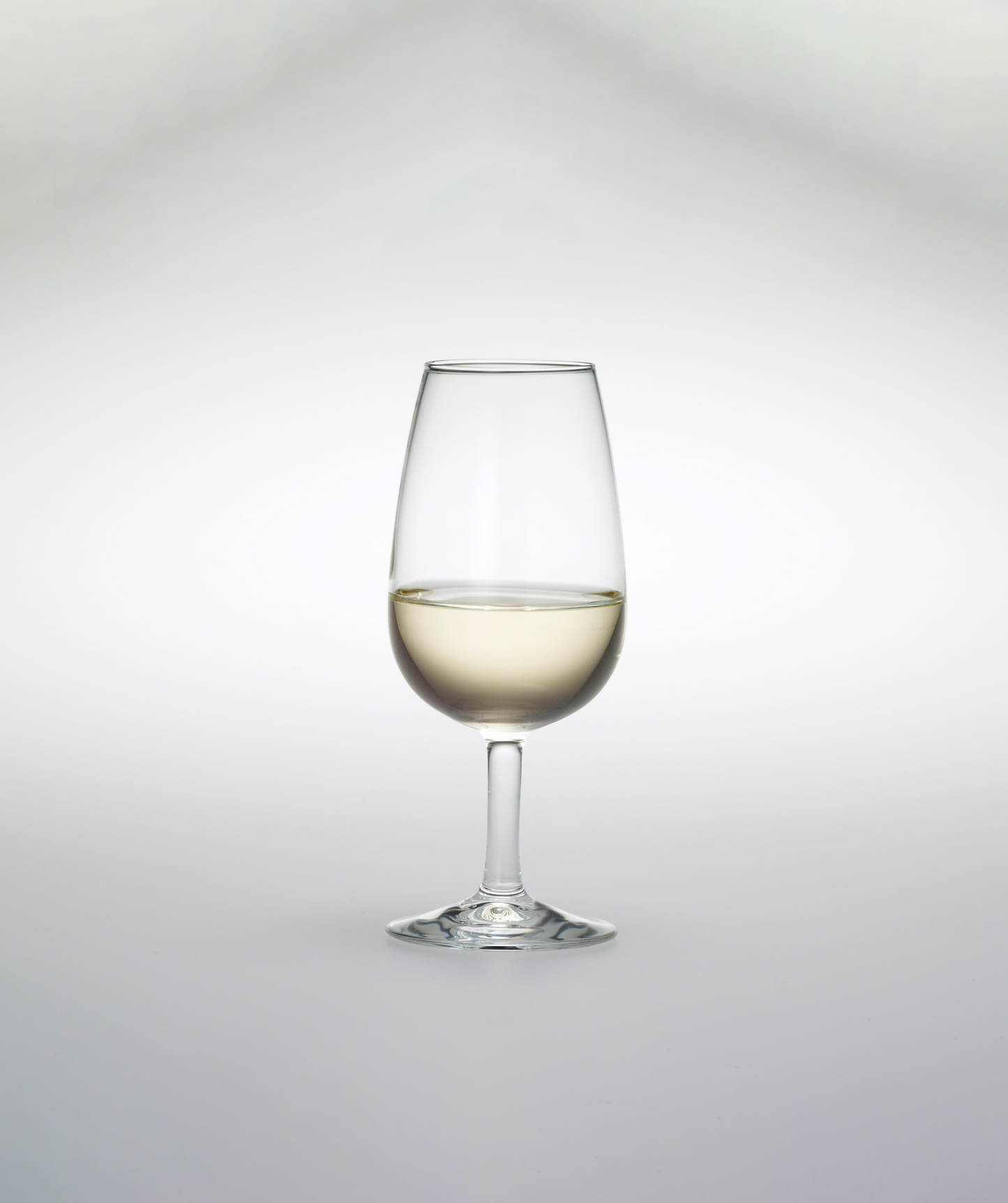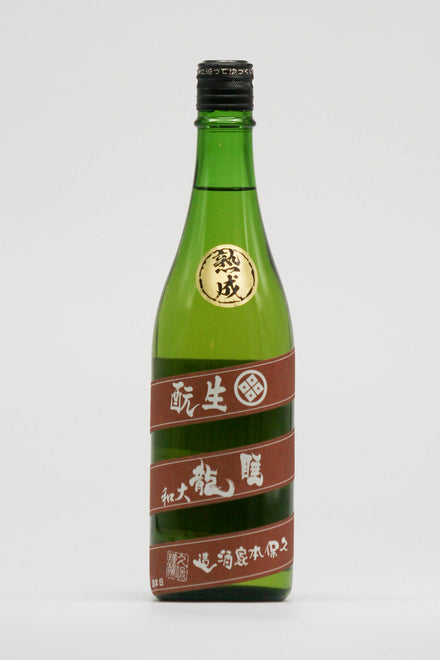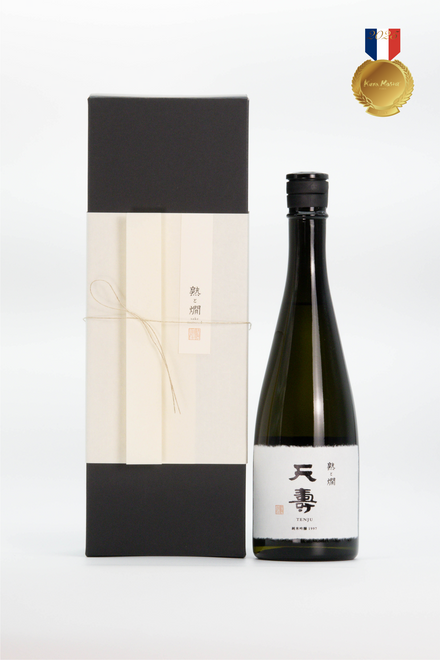


A Junmai Ginjo brewed in 2011 using the ancient Kimoto
starter method and then matured at a low temperature.
It's elegant, yet gorgeous aroma and full-bodied taste profile
are very appealing.
Daishichi Raden 2011
| Vintage | 2011 |
| Years aged | 12 years |
- 10 years or more
- 2010 or later
- All Products
- Less than 5,000 yen
- Light Yellow/Green
- Throughout the meal
- Brewer:
- Alcohol:15 degrees
- Volume:500ml
Couldn't load pickup availability
[ Drinking alcohol under the age of 20 is prohibited by law. ]
The uniquely shaped original bottle is adorned with a label shaped like a mother-of-pearl butterfly.
After bottling, the sake is slowly matured at a low temperature so that the gorgeous ginjo aromas do not fade over time and for a mellow and full-bodied taste profile.
Various food pairings are possible depending on serving temperature, such as sushi at white wine temperature or shabu shabu or tempura when warmed.
- about
-
Type Rice polishing ratio 58% (super flat polished rice) Yeast type Daishichi Yeast Ingredients/raw materials Rice (domestic)/Rice malt (domestic) Rice type Gohyakumangoku Origin of rice - Toji(Brew Master) Takanobu Sato (Nambu chief brewer/modern master craftsman) Assemblage -
- Recommended occasions/temperature
-
- How to store
-
- Delivery dates and charges
-



Tasting comments
-
Nobuhiro Ueno
(Juku to Kan Bar Master / Permanent Director of the Toki Sake Association)The top has a banana-like scent (derived from esters), and a faint glue-like scent (ethyl acetate) that I remember from my childhood. The taste has a gentle banana-like sweetness, followed by an acidity that crispens the palate. Thanks to the moderate astringency, it washes away cleanly while leaving a lingering aftertaste.
-
Hidekazu Ishiwata
(Former National Tax Bureau Chief Appraiser)Light yellow. There is a faint charred note in the orthonasal aroma. The retronasal aroma is a relaxed, mature aroma, with banana-like isoamyl acetate fruit, and a caramel-like nuance. Smooth texture, fullness, and firmness due to light acidity.
-
Akiko Toda
(Director of ITTEKI, Japan Sake and Meat Research Institute)It has a scent reminiscent of wisteria flowers, and occasionally a refreshing scent like green bananas. The gradual layers of fragrance create an interesting sense of depth. A well-balanced sake combining smoothness from maturation and gentleness from the ginjo aromas.
-
Yuji Yamauchi
(Yushima Tenjinshita Sushi Hatsu 4th generation / 1st JSA SAKE DIPLOMA competition winner)A fragrance derived from rice and a gentle ginjo aroma.
The rich flavor and balance give a sense of calm.
The aftertaste also leaves a delicious taste.
Brewer
- Choosing a selection results in a full page refresh.
- Opens in a new window.



